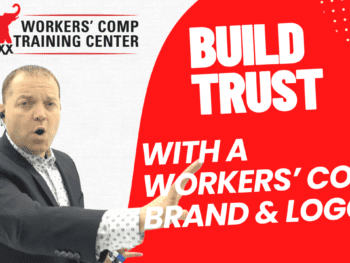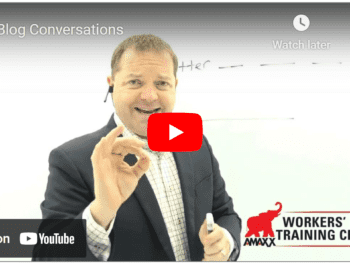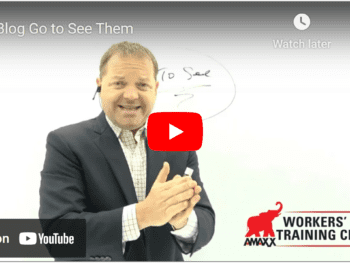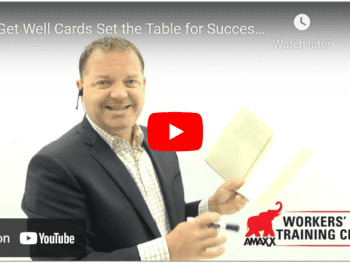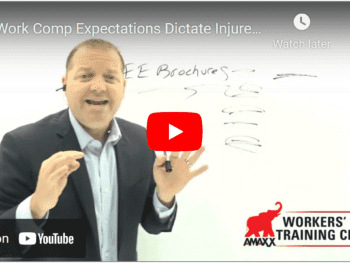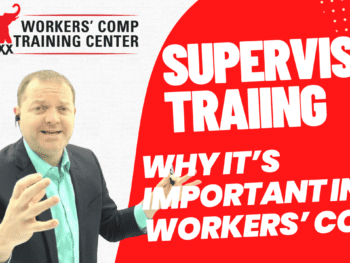
You’re not alone. Those are some of the biggest challenges employers cite in implementing their injury management programs. Thankfully, several low-cost, easy-to-implement strategies can ensure your workers understand the system and are on the same page with you.
Why Communication is Important
In addition to the frustrations that you feel when communication with injured workers is not smooth, it also costs you money. Research studies show a direct link between poor communication and workers’ compensation claims outcomes.
For example, Liberty Mutual found a decided difference in outcomes when supervisors responded positively rather than negatively to a worker reporting an injury. Positive responses, along with an injury triage system to report injuries were associated with an average of 40 percent lower claim costs and 58 percent shorter disability durations.
Click Link to Access Free PDF Download
“9-Element Blueprint To Create Your Workers’ Comp Employee Brochure”
Supervisors’ responses that were deemed as ‘negative’ and drove poor outcomes included:
- Lack of support
- Blaming the worker
- Expressing anger
- Questioning the validity of the injury
- Encouraging the worker not to file a claim
Positive outcomes were reported when the supervisors were flexible and open to talk with the worker, responded quickly, and expressed genuine interest in the worker’s overall well-being. Setting realistic expectations was cited as one of the most important best practices to communicate well with the injured worker.
Return-to-work coordinators said they were most effective in their jobs when they practiced:
- Active listening
- Communication
- Ability to relate well to other stakeholders
- Problem-solving
- Having confidentiality
These so-called soft skills were more strongly associated with positive outcomes than having technical knowledge of the workers’ compensation system. The first step to change supervisors’ negative responses to positive ones is to show them the financial impact each has. Beyond that, there are several ways organizations can demonstrate genuine caring for their injured workers.
Effective Communication Strategies
Injured workers need to have at least a general understanding of how the workers’ compensation process works. This can be accomplished through
- Employee brochure. This proactively sets employees’ expectations in the event they are injured. It should communicate briefly how the program works, including the transitional duty program and RTW. It should clearly state that the company will take care of them and help them return to work. It should be written in a positive tone.
- Wallet card. Once an employee does become injured, he most likely will have forgotten the details in the employee brochure. A simple wallet card or posted notice should be readily available and should explain the post-injury steps:
- How to report the claim
- How and where medical care will be provided
- The RTW process
- Expectations for weekly meetings with you and/or others
Injured workers are often frightened and confused. The actions undertaken immediately following the injury set the tone for the entire process. Several tactics put the claim on the path for a positive outcome.
- First-day phone call. If a friend has been in an accident or is suddenly injured, you would probably contact him to let him know you are thinking about him, find out how he is doing and see if there is anything you can do to help. Injured workers are no different. A supervisor, or manager who has a positive relationship with the worker should call the worker as soon as possible, preferably the first day. The conversation does not need to be more than a few minutes, but it should include messages such as
- We are sorry this happened
- We want you back at work as soon as you are able
- How are you doing?
- Do you need me to contact your family, bring you anything you may have left at work?
- Are there any questions about the workers’ compensation process I can answer for you?
The person making the call should make sure the worker knows what to expect — whether a claims adjuster and/or case manager will be in contact, how medical care will be provided for him, and that his job will be waiting for him when he returns.
- Get-well card. In addition to the initial contact from the supervisor or manager, coworkers should also convey their well wishes to the injured worker. The easiest way to do this is by sending a simple get well card, signed by the worker’s colleagues. Their messages can be simple expressions of support.
- Weekly Meetings. Communication with the injured worker should not stop after the initial contact. There should be ongoing, regular meetings via phone or in person if possible. these conversations serve two purposes:
- They let the injured worker know you are there to help.
- They help you gauge how well the worker is recovering.
These conversations should continue to express well wishes and focus on the worker’s progress. The supervisor or manager can ask:
- How the worker is doing
- How his medical care is going — whether he likes his providers and if they are responsive to his needs
- What activities he is or is not able to do
- What questions or frustrations he may have
Conclusion
The workers’ compensation system has many moving parts and complications. By communicating well with injured workers, you can eliminate many of the frustrations and realize better outcomes and lower costs.

Author Michael Stack, CEO Amaxx LLC. He is an expert in workers’ compensation cost containment systems and helps employers reduce their workers’ comp costs by 20% to 50%. He works as a consultant to large and mid-market clients, is a co-author of Your Ultimate Guide To Mastering Workers Comp Costs, a comprehensive step-by-step manual of cost containment strategies based on hands-on field experience, and is founder & lead trainer of Amaxx Workers’ Comp Training Center .
Contact: mstack@reduceyourworkerscomp.com.
Workers’ Comp Roundup Blog: https://blog.reduceyourworkerscomp.com/
©2018 Amaxx LLC. All rights reserved under International Copyright Law.
Do not use this information without independent verification. All state laws vary. You should consult with your insurance broker, attorney, or qualified professional.



